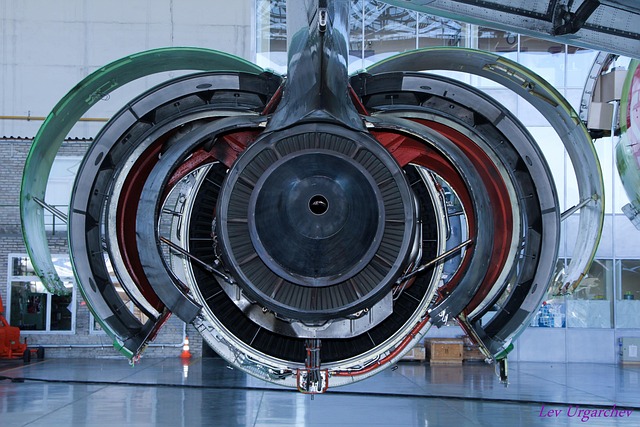
Understanding the Role of Subsidies in Global Trade
In an increasingly interconnected world, the dynamics of global trade have evolved, influenced by policies, agreements, and strategic interests among nations. Among these influences, subsidies represent a crucial tool that governments use to protect, encourage, and sometimes distort trade. This article seeks to explore the complexities surrounding subsidies, their implications on global trade relations, and their broader economic impact.
What are Subsidies?
Subsidies are financial incentives provided by governments to support specific sectors, industries, or groups within their economy. These can take various forms, including direct cash payments, tax breaks, low-interest loans, and price supports. The primary objectives of subsidies often involve:
- Supporting domestic industries against international competition.
- Promoting economic development in targeted areas.
- Encouraging research and innovation.
- Providing social benefits, such as affordable housing or education.
While subsidies can drive growth and enhance productivity in certain sectors, they can also lead to significant distortions within the market, influencing production, consumption patterns, and, ultimately, international trade flows.
The Different Types of Subsidies
Subsidies can be categorized into different types based on their nature and purpose. Understanding these categories is essential for grasping their role in global trade.
Production Subsidies
Production subsidies are aimed at encouraging firms to increase output. By covering a portion of production costs, these subsidies enable companies to sell their goods at lower prices, potentially undermining foreign competitors. Such practices can lead to an oversupply in the global market and create frictions with trading partners.
Export Subsidies
Export subsidies are designed to boost the competitiveness of domestic goods in international markets. By providing financial support for exports, governments can effectively lower the price of exported goods, making them more attractive to foreign buyers. This can spark retaliatory measures from other countries, leading to trade disputes.
Import Subsidies
Conversely, import subsidies are less common but represent financial support to reduce the cost of importing certain goods. These may be used to stabilize domestic markets or mitigate the effects of commodity price fluctuations, although they can also encourage reliance on foreign products.
The Impacts of Subsidies on Global Trade
The impacts of subsidies extend beyond the immediate recipients. They are a double-edged sword that can both promote economic growth and cause detrimental trade outcomes.
Market Distortion
One of the most significant impacts of subsidies is market distortion. By artificially lowering production costs, subsidies can lead to an oversupply of goods in the global market, resulting in depressed prices that can harm foreign competitors. This creates an uneven playing field, raising questions about fairness in international trade practices.
Trade Conflicts
Countries often respond to perceived unfair advantages gained through subsidies with countermeasures, leading to trade disputes. The World Trade Organization (WTO) provides a mechanism for countries to address these conflicts, but cases can be lengthy and complex, with no guaranteed resolution. Trade wars can ensue when countries impose tariffs or retaliatory measures in response to subsidies.
Long-term Economic Dependency
While subsidies can drive short-term growth, reliance on government support may hinder the long-term development of industries. Companies that are buoyed by subsidies may lack the incentive to innovate or improve efficiency, ultimately leading to a lack of competitiveness in a global market that is increasingly driven by innovation and consumer preference.
The Debate Over Subsidies: Pros and Cons
The debate surrounding subsidies is polarized, with strong arguments on both sides. Advocates argue that subsidies can be beneficial for economic development, while critics worry about the distortions they cause in the market.
Arguments in Favor of Subsidies
Proponents of subsidies often highlight their potential to:
- Support emerging industries, helping them to establish a foothold in the market.
- Protect jobs in key sectors, especially during economic downturns.
- Encourage advancements in technology and innovation by providing funding for research and development.
- Promote public goods, such as environmental sustainability or food security, that may not be adequately addressed by market forces.
Arguments Against Subsidies
Conversely, critics emphasize that subsidies can lead to:
- Distortions in international trade, resulting in retaliatory measures and strained diplomatic relations.
- Misallocation of resources, where capital flows to inefficient sectors, undermining overall economic growth.
- Long-term dependency that stifles competition and innovation.
- Corruption and mismanagement, as funds may not always reach intended beneficiaries.
Case Studies: Global Examples of Subsidies
Examining specific examples can provide insight into how subsidies operate within different regions and sectors, illustrating their complex impact on global trade.
Agricultural Subsidies in the United States
The United States is well-known for its agricultural subsidy programs, which aim to stabilize farmer incomes and manage food supply. These subsidies have enabled U.S. farmers to compete internationally, particularly in crops like corn and soybeans. However, they have also led to tensions with countries that argue that these subsidies distort global agricultural markets and harm farmers in developing nations.
European Union’s Common Agricultural Policy (CAP)
The CAP has historically provided significant subsidies to European farmers, ensuring competitive pricing within the EU. Nevertheless, critics argue that these subsidies can create barriers to trade, restricting agricultural access for producers from other parts of the world, particularly the Global South, where farmers often lack similar support systems.
Renewable Energy Subsidies in China
China has invested heavily in renewable energy subsidies aimed at fostering domestic production and consumption of solar panels and wind turbines. This aggressive support has positioned China as a leader in the global renewable energy market. However, it has raised concerns among Western nations regarding unfair competition and threats to domestic industries that struggle to compete against subsidized prices.
The Future of Subsidies in Global Trade
As globalization and trade relationships continue to evolve, the role of subsidies is likely to adapt accordingly. Several factors may shape their future:
Trade Agreements and Regulations
International trade agreements increasingly address subsidies as part of negotiations, seeking to establish fairer playing fields. The WTO and regional trade agreements may push for stricter rules around the use of subsidies, potentially leading to their reduction or reform.
Sustainability Goals
With growing emphasis on environmental sustainability, subsidies may be redirected to support green technologies and sustainable practices. Policymakers will need to strike a balance between supporting industries and avoiding the pitfalls of market distortion.
Technological Advancement
As economies embrace digital technologies and automation, the nature of subsidies may shift. Governments might focus on funding research and development within innovative sectors while adjusting the support levels of traditional industries that face declining demand.
Conclusion
Subsidies play a multifaceted role in global trade, acting as both a vehicle for economic growth and a cause for contention among nations. Understanding their potential benefits and drawbacks is essential for policymakers aiming to navigate the complex landscape of international trade. As subsidy frameworks evolve with globalization, sustainability imperatives, and technological advancements, the ongoing discussions about trade fairness and competitiveness will remain critical in shaping the future of global markets.


